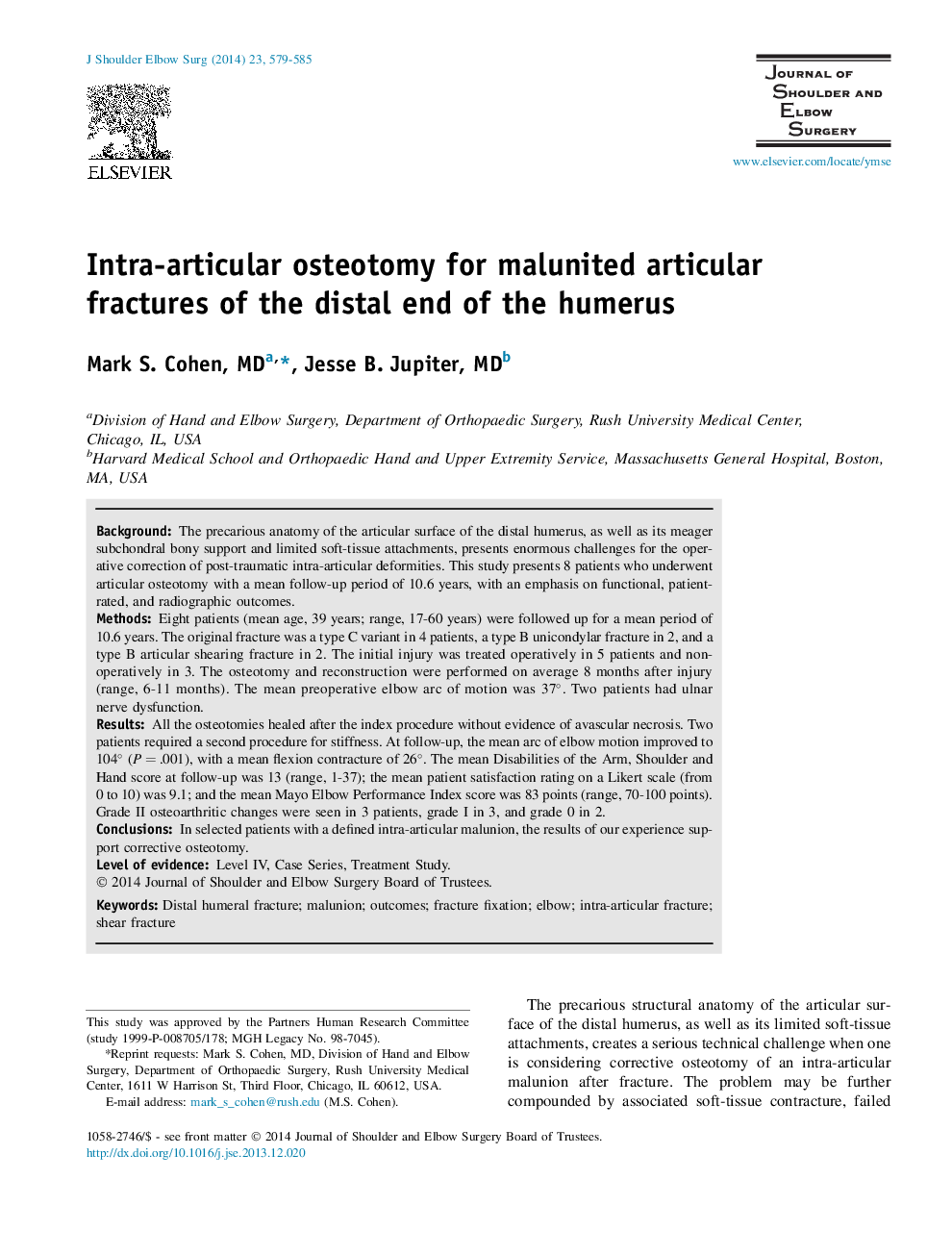| Article ID | Journal | Published Year | Pages | File Type |
|---|---|---|---|---|
| 6211078 | Journal of Shoulder and Elbow Surgery | 2014 | 7 Pages |
BackgroundThe precarious anatomy of the articular surface of the distal humerus, as well as its meager subchondral bony support and limited soft-tissue attachments, presents enormous challenges for the operative correction of post-traumatic intra-articular deformities. This study presents 8 patients who underwent articular osteotomy with a mean follow-up period of 10.6 years, with an emphasis on functional, patient-rated, and radiographic outcomes.MethodsEight patients (mean age, 39 years; range, 17-60 years) were followed up for a mean period of 10.6 years. The original fracture was a type C variant in 4 patients, a type B unicondylar fracture in 2, and a type B articular shearing fracture in 2. The initial injury was treated operatively in 5 patients and nonoperatively in 3. The osteotomy and reconstruction were performed on average 8 months after injury (range, 6-11 months). The mean preoperative elbow arc of motion was 37°. Two patients had ulnar nerve dysfunction.ResultsAll the osteotomies healed after the index procedure without evidence of avascular necrosis. Two patients required a second procedure for stiffness. At follow-up, the mean arc of elbow motion improved to 104° (P = .001), with a mean flexion contracture of 26°. The mean Disabilities of the Arm, Shoulder and Hand score at follow-up was 13 (range, 1-37); the mean patient satisfaction rating on a Likert scale (from 0 to 10) was 9.1; and the mean Mayo Elbow Performance Index score was 83 points (range, 70-100 points). Grade II osteoarthritic changes were seen in 3 patients, grade I in 3, and grade 0 in 2.ConclusionsIn selected patients with a defined intra-articular malunion, the results of our experience support corrective osteotomy.
